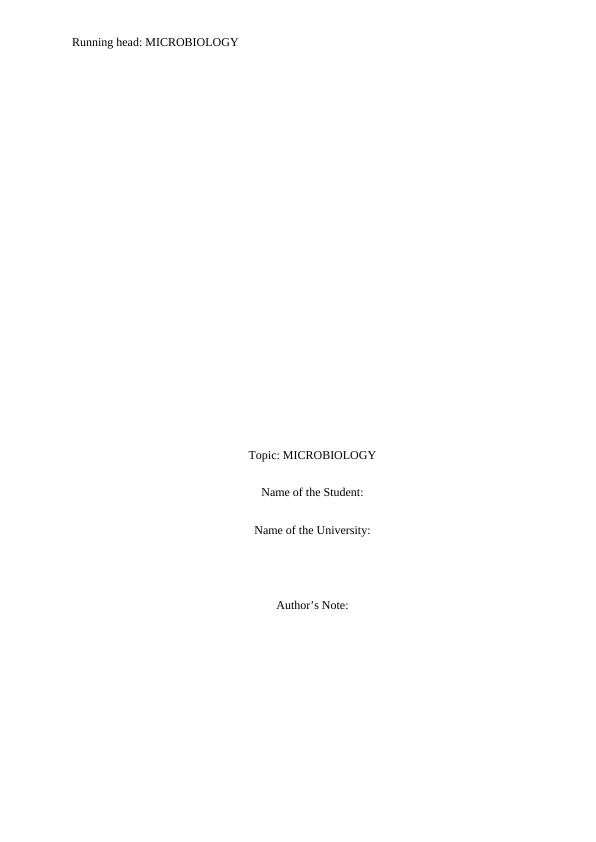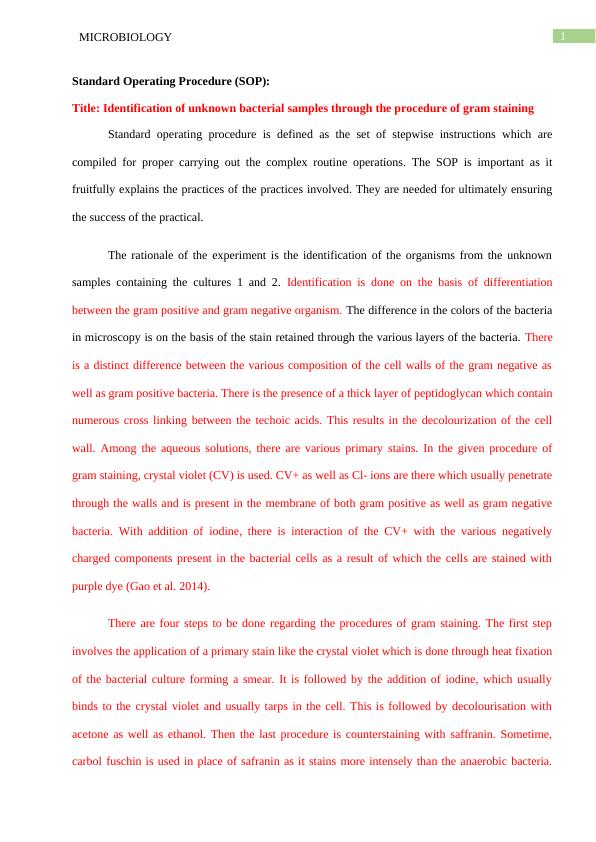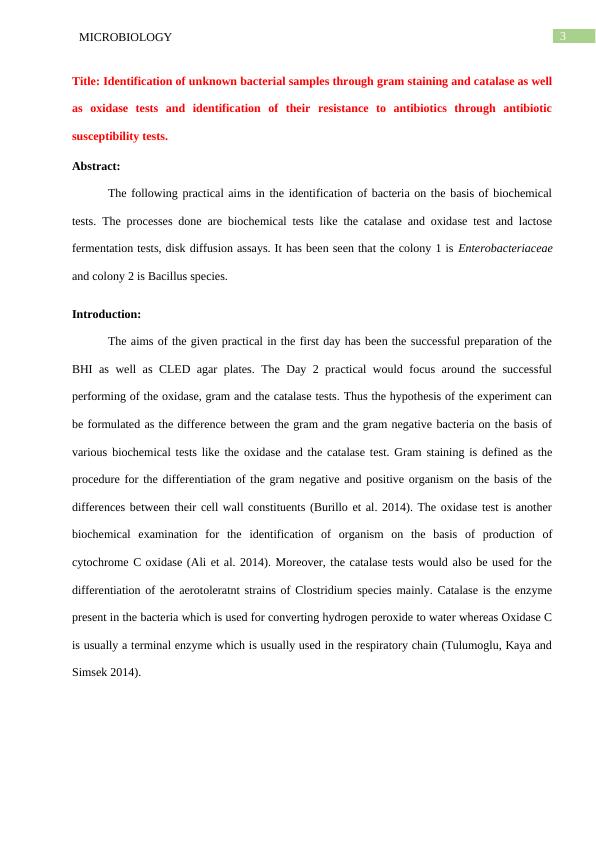Identification of Unknown Bacterial Samples through Gram Staining
13 Pages2688 Words454 Views
Added on 2023-04-19
About This Document
This document provides a step-by-step guide on how to identify unknown bacterial samples through the procedure of gram staining. It explains the rationale behind the experiment and provides detailed instructions on the gram staining process. The document also includes a flow chart of the methodologies used in the practical.
Identification of Unknown Bacterial Samples through Gram Staining
Added on 2023-04-19
ShareRelated Documents
End of preview
Want to access all the pages? Upload your documents or become a member.
Isolation and Characterization of Unknown Bacteria B Using Morphological and Biochemical Tests
|6
|2023
|228
Microbiology Assignment | Morphology of Bacteria
|13
|3192
|249
Principle of Disease Investigation in Medical Microbiology
|7
|1321
|56
Microbiology Study: Identification of Unknown Organisms from Bacterial Cultures
|8
|1804
|438




